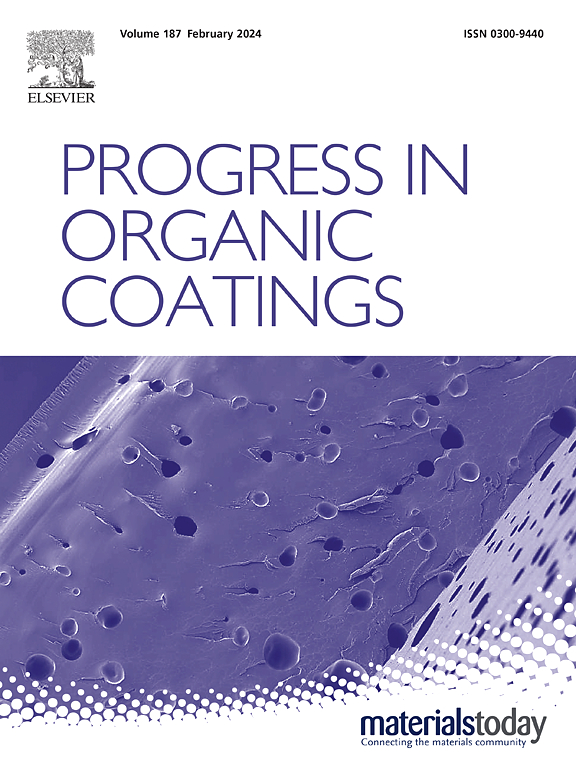基于沸石13x和磺化聚合物的电动汽车储热复合涂层的吸附和力学性能
IF 7.3
2区 材料科学
Q1 CHEMISTRY, APPLIED
引用次数: 0
摘要
未来几年,电动汽车将在能源转型中发挥越来越重要的作用。限制其采用的主要挑战之一是与传统车辆相比,行驶里程较短,由于乘客车厢的气候控制,在冬季条件下行驶里程可能会进一步减少50%。缓解这一问题的一项有前途的技术是使用基于吸附材料的储热系统,该系统可以在显著节省能源的情况下进行空气加热和除湿。虽然该系统的有效性已经得到证明,但需要进一步的研究来确保吸附剂材料的足够机械性能,与固定应用相比,吸附剂材料承受的应力要高得多。在这种背景下,这项工作的重点是开发基于沸石13x和磺化五嵌段三元聚合物(Nexar)粘合剂的创新复合材料。合成了一系列不同沸石重量百分比(80-95 wt%)的复合涂层。将涂层应用于铝基材上,并对其进行了表征,以评估其机械、形态、热和吸附性能。结果表明,吸附能力和机械稳健性之间的权衡。虽然较高的沸石含量(高达95% wt%)使水蒸气吸附能力最大化(近28% wt%),但它对抗划伤性(500g负载时划伤宽度为1300 μm)、抗冲击性(160 mJ时损伤直径为3.5 mm)和抗拉强度(0.82 MPa)产生负面影响。相反,含有80-90 wt%沸石的涂层提供了更好的平衡,在改善机械性能的同时保持了合理的吸附容量(22.0-25.9 wt%)。与纯聚合物相比,所有化合物都表现出增强的热稳定性,并表现出优异的吸附/解吸可逆性,适用于运输领域的拟议应用。本文章由计算机程序翻译,如有差异,请以英文原文为准。
Adsorption and mechanical properties of composite coatings based on zeolite 13× and sulfonated polymer for thermal energy storage in electric vehicles
Electric vehicles will play an increasingly important role in the energy transition in the coming years. One of the main challenges limiting their adoption is the reduced driving range compared to conventional vehicles, which can further decrease by up to 50 % in winter conditions, due to passengers' compartment climate control. A promising technique to mitigate this issue is the use of a thermal storage system based on sorption materials, which enables air heating and dehumidification with significant energy savings. Although the effectiveness of this system has already been demonstrated, further studies are required to ensure the adequate mechanical properties of adsorbent materials, which are subjected to significantly higher stresses compared to stationary applications. In this context, this work focuses on the development of innovative composites based on zeolite 13× and a sulfonated pentablock terpolymer (Nexar) binder. A series of composite coatings were synthesized varying zeolite weight percentages (80–95 wt%). The coatings were applied to aluminium substrates and characterized in order to assess their mechanical, morphological, thermal, and adsorption properties. Results indicate a trade-off between adsorption capacity and mechanical robustness. While higher zeolite content (up to 95 wt%) maximized water vapour adsorption capacity (nearly 28 wt%), it negatively impacted scratch resistance (scratch widths >1300 μm at 500 g load), impact resistance (3.5 mm damage diameter at 160 mJ), and pull-off strength (0.82 MPa). Conversely, coatings with 80–90 wt% zeolite offered a better balance, maintaining reasonable adsorption capacity (22.0–25.9 wt%) while improving mechanical properties. All compounds demonstrated enhanced thermal stability compared to the neat polymer and exhibited excellent adsorption/desorption reversibility, being suitable for the proposed applications in the transportation sector.
求助全文
通过发布文献求助,成功后即可免费获取论文全文。
去求助
来源期刊

Progress in Organic Coatings
工程技术-材料科学:膜
CiteScore
11.40
自引率
15.20%
发文量
577
审稿时长
48 days
期刊介绍:
The aim of this international journal is to analyse and publicise the progress and current state of knowledge in the field of organic coatings and related materials. The Editors and the Editorial Board members will solicit both review and research papers from academic and industrial scientists who are actively engaged in research and development or, in the case of review papers, have extensive experience in the subject to be reviewed. Unsolicited manuscripts will be accepted if they meet the journal''s requirements. The journal publishes papers dealing with such subjects as:
• Chemical, physical and technological properties of organic coatings and related materials
• Problems and methods of preparation, manufacture and application of these materials
• Performance, testing and analysis.
 求助内容:
求助内容: 应助结果提醒方式:
应助结果提醒方式:


